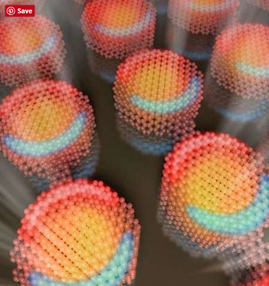
A research team has developed a device that uses graphene materials to detect mid-infrared light and efficiently convert it into an electrical signal at room temperature. This is a breakthrough that could lead to better communication systems, thermal imagers and other technologies.
The study, published in the journal Nature Materials, is a collaboration between the Associate Professor of Engineering and Science, Fengnian Xia, Barton L. Weller's lab, and the Spanish Photonics Institute (ICFO) F. Javier Garcia de Abajo Lab. Completed.
Medium to infrared radiation of 8 to 14 microns is very useful in thermal imaging and revealing molecular specific spectral information. In addition, this radiation can travel in the air without loss, indicating that it has great potential for free-space communication and remote sensing. However, conventional room temperature infrared detectors have a very long heat dissipation time due to their large heat capacity.
The device shown in this study exploits the unique properties of highly conductive graphene (single layer of carbon atoms) and its plasma (the quantum of collective electron oscillations).
“Graphite converts mid-infrared light into a plasma, which can then be converted into heat,†said Xiushi Guo, a Ph.D. student at Xia Laboratories, who is the first author of the study. The real uniqueness of graphene is that the electrons caused by plasma decay are much warmer than other materials. â€
The resistance of graphene is not sensitive to the temperature at room temperature, so it is difficult to electrically detect mid-infrared light except for extremely cold temperatures, which means that it cannot be integrated into available equipment. To this end, the researchers have developed a new device that features a graphene disk plasmonic resonator connected by quasi-one-dimensional nanoribbons. It can effectively detect mid-infrared light at room temperature.
Guo said: "Our device has an artificial nanostructure that converts light into a plasma and then into electron heat." Its resistance is also very sensitive to temperature rise. Unlike in graphene sheets, in narrow graphene nanoribbons, electron transport is strongly dependent on the thermal energy of the electrons.
More importantly, Guo said, this device reacts very quickly to mid-infrared radiation. Existing room temperature thermal sensors generally have a large specific heat capacity and a well designed thermal insulation structure. They usually take milliseconds to heat up. But for graphene, it can be more than 1 nanosecond, or just 1 billionth of a second. This makes the graphene detector ideal for communication applications in the mid-infrared high-speed free space, which is beyond the scope of traditional microbolometers that operate at room temperature.
This device is simple and scalable. It is worth noting that the coverage area of ​​the device is even smaller than the wavelength of the light. It offers many new opportunities for mid-infrared photonics, such as the construction of high-resolution mid-infrared cameras with sub-wavelength pixels, or integration on photonic integrated circuits to implement mid-infrared spectrometers on a single chip.
Insect Killer Lamp,Bl Tube,Bl Lamp,Bl Bulb
Changxing leboom lighting product CO.Ltd. , https://www.leboomuvs.com
